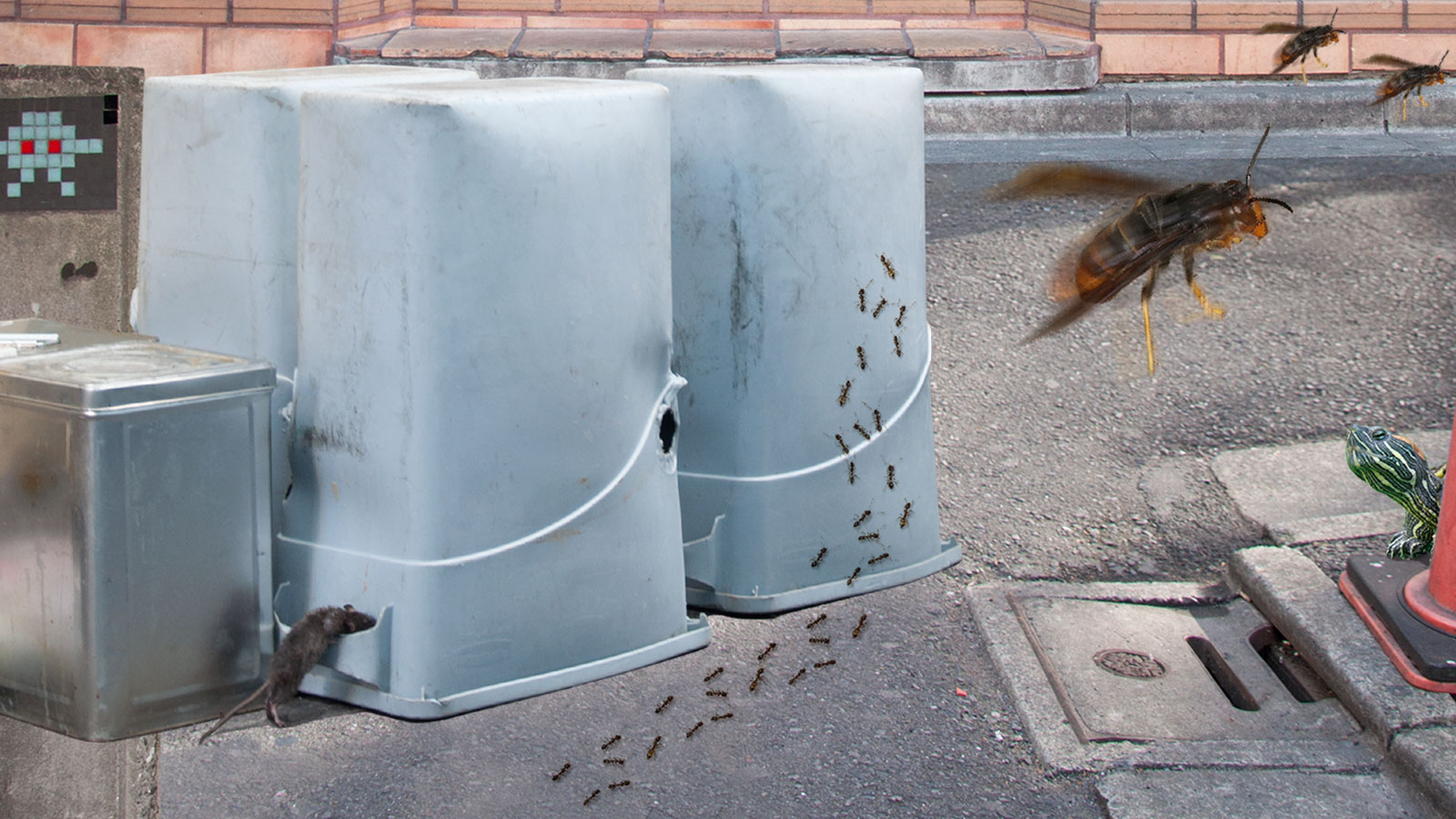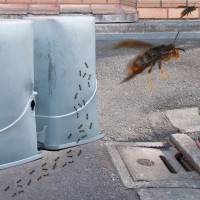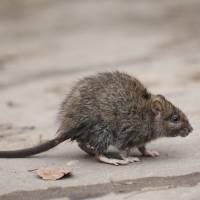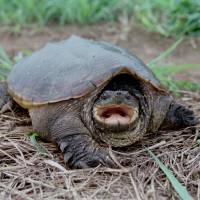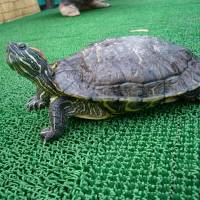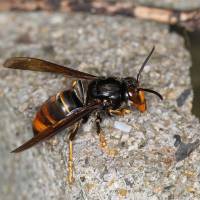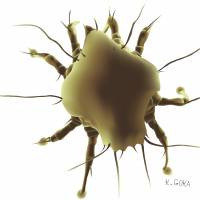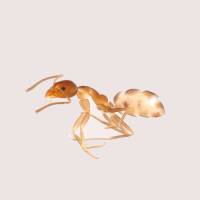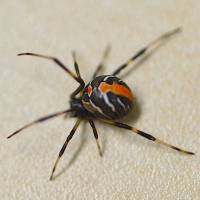Shibuya has a rat problem.
The rodents are lured to the area by the promise of an abundant supply of food scraps, which sit in the kitchens of countless restaurants and bars scattered throughout the capital's famous shopping and entertainment district.
On some days of the week, the waste is even collected, placed into flimsy plastic bags and left in piles on the side of a road — with nobody guarding it. As far as rats are probably concerned, Shibuya is a rodent's paradise.
Fumio Shino, manager of Shibuya Ward Office's Public Hygiene Division, blames the rise in unwanted animals such as rats on the deteriorating state of the environment.
"It's not like Shibuya's pest population has exploded over the past two or three years, it has been a problem for some time," Shino says. "We've been trying to work with shops in the district to remove as much garbage off the streets as we can but, quite frankly, there are too many food outlets to take care of."
The district of Shibuya has been struggling to deal with a sizeable rat population for some time.
Rats as big as 20 cm in length can frequently be seen scuttling around some of the smaller streets that lead off the district's main shopping drag, with the more unlucky ones flattened by delivery vehicles that service the area.
Visiting tourists may even be perturbed to learn that rats can often be seen in the garden behind Hachiko's statue.
Shino says the garden behind Hachiko was overturned about 15 years ago, with authorities placing a wire mesh over it in an effort to keep the area clear of nests.
A park in front of the main branch of Tokyu Department Store was concreted over for the same reason.
However, Shino says both strategies failed miserably.
"We don't keep detailed statistics, but Shibuya has countless rats," he says. "All we can do is ensure we maintain a clean environment and try to create a city that rats find unsuitable. Culling the population would only help temporarily."
Other experts, however, view the situation a little differently.
During a three-hour special of TV Asahi's popular show "Hayashi Osamu no Imadesho! Koza" ("Osamu Hayashi's Learn it Now Special") that aired in April, Koichi Goka of the National Institute for Environmental Studies identified rat species as the most dangerous of all common animals found in Japan.
"If we don't exterminate rats, the size of the rat population will only continue to grow," Goka says.
In 2010, Goka published a book titled "Kuwagatamushi ga Kataru Seibutsu Tayosei" ("Stag Beetles Tell the Story of Biodiversity") and he has been in hot demand ever since, making appearances on television and giving lectures on issues pertaining to biology.
Often wearing dark glasses and a black leather shirt, it didn't take long for him to become a recognizable household figure.
"For now," he says, "rats in Tokyo are fairly clean but, in the longer term at least, they could spread infectious diseases such as pestilence and cholera."
With almost two decades' experience at the National Institute for Environmental Studies, Goka works in the Center for Environmental Biology and Ecosystem Studies, which examines the ecological risk of invasive species.
Goka says that foreign rat species are, in general, the biggest nuisance to society.
"Foreign species of rats have been introduced (to Japan) via cargo ships, which would suggest they're probably living in the coastal area of Tokyo's Shinagawa area," he says. "We often find viruses in the excrement of these animals. The situation becomes worse when domestic species of rats are infected by foreign species, so it's important to exterminate the foreign animals before they come in contact with their domestic cousins."
As revolting as rats may be, they're far from the only foreign animal that is proving to be harmful to the environment. Common snapping turtles, Goka says, are the second most threatening.
Typically found in North America, common snapping turtles were introduced to Japan as pets in the 1960s.
Snapping turtles are renowned for their combative disposition when out of the water. In adulthood, their shells can measure up to 50 cm in diameter, and they possess a beak strong enough to bite off a human finger.
To date, snapping turtles have been found nationwide, with populations even thought to be living in Ueno Park's Shinobazu Pond and Nerima's Hikarigaoka Park, as well as in Inba Swamp in Chiba Prefecture.
Goka says many snapping turtles in the wild are former pets that have been released by their owners.
Chiba Prefecture decided to cull its snapping turtle population in 2007. Since then, hunters have captured 3,700 animals in the prefecture, snaring as many as 907 turtles in 2014.
In an attempt to limit the damage, the government listed snapping turtles on its List of Regulated Living Organisms under the Invasive Alien Species Act in 2005.
However, this only served to exacerbate the problem, as pet owners started to abandon the turtles in case they were punished for keeping an illegal species.
In March, the Environment Ministry updated the list, which now features a total of 429 species, including 30 invasive native ones.
"About 2,000 invasive alien species have been identified in Japan," Goka says. "It's hard to know the proportion of invasive foreign species that can be found in the country, but it isn't many. If, however, we're talking about organisms we see every day, I could say more than half of them are nonnative."
Goka says red-eared slider turtles are just as much of a problem as snapping turtles, a problem also caused by former owners who tired of their pets.
"Red-eared slider turtles live for 60 years, possibly even longer than their owners. That's why people abandon them and, now, they represent almost 90 percent of all turtles in Japan," Goka says. "No researchers are focusing on them and the government isn't taking any action, so there's no other choice than to capture them one by one by hand. We need to come up with a successful method to target a specific species."
Indeed, methods for extermination vary according to the species, Goka says.
A team headed by Goka has recently completed research into the Asian predatory wasp, an incredibly invasive species that originated in southern China and has been found in places as far away as France, Spain, Portugal, Belgium and Germany.
In Japan, the wasp was found on the island of Tsushima, Nagasaki Prefecture, in 2012.
"The Asian predatory wasp population exploded on Tsushima in a very short space of time," Goka says. "We tried to keep it from coming to the mainland but the Environment Ministry announced in September that a nest was found in Kitakyushu (Fukuoka Prefecture)."
Goka warns that the Asian predatory wasp could spread through the Chugoku and Shikoku regions to Kansai and, ultimately, nationwide.
"When a similar case occurred in New Zealand and Hawaii, they put out minced meat smeared with insecticide so the wasps would return to the nest with poisoned food," Goka says. "In Tsushima, the wasps ignored the meat because there is plenty of other food they preferred. We're now planning to capture a couple of the wasps and release them after infecting them with a virus we're developing."
Goka started his career as a developer of pesticides at a pharmaceuticals company after graduating from Kyoto University's School of Agriculture.
He had initially studied biotechnology, which was the trend at the time, but decided to focus on organisms after discovering the subject of mites.
"I avoided studying insects, as it seemed kind of nerdy, but I changed my mind after taking a course about mites. I couldn't believe how interesting those species were," he says, laughing. "You can hardly see mites with your bare eyes but they look beautiful through a microscope."
Goka says mites have been around for 300 million years or so, with more than 50,000 varieties identified. Mites come in a wide range of shapes and colors, although red seems particularly prevalent.
Goka says mites are still one of his favorite living organisms.
"I've always believed that researching mites won't take me anywhere, and that's why I initially worked as a developer of pesticides. I wanted to provide a little bit of help to society," he says. "Now, however, I can research invasive species and warn the public through television, newspapers and other mediums. I can also lobby the government to make necessary changes to the law. It's an honorable job for a person such as myself."
Goka is now warning the government to prepare for the influx of visitors in the leadup to the 2020 Tokyo Olympics.
"A massive amount of construction materials will be imported from abroad, which could lead to invasive species such as Argentine ants or redback spiders (from Australia) hitching a ride in the cargo," he says. "This could happen anywhere, anytime.
With as many as 20 million tourists expected to visit the country each year by the time the Olympics takes place, he says preparations should be made to ensure there are no stowaways.
"Some travelers may arrive with infectious diseases," Goka says. "There's far worse things than dengue fever out there. Although it's difficult to prevent the arrival of invasive foreign species or infections, we should act on the assumption that this will, in fact, happen and prepare preventive measures in advance."
In spite of his slightly idiosyncratic appearance on TV, Goka takes his job very seriously.
"Being an expert on invasive species sounds like a niche topic but with all the feral raccoons and civet cats around us these days, it's my duty to appear on TV and make everyone aware — even the young women hanging out on the streets of Shibuya," he deadpans. "Although I'm on a comedy program, if I say something like Argentine ant, it's likely people will at least remember how dangerous these invasive species really are."
Related story: Taking the sting out of household infestations



